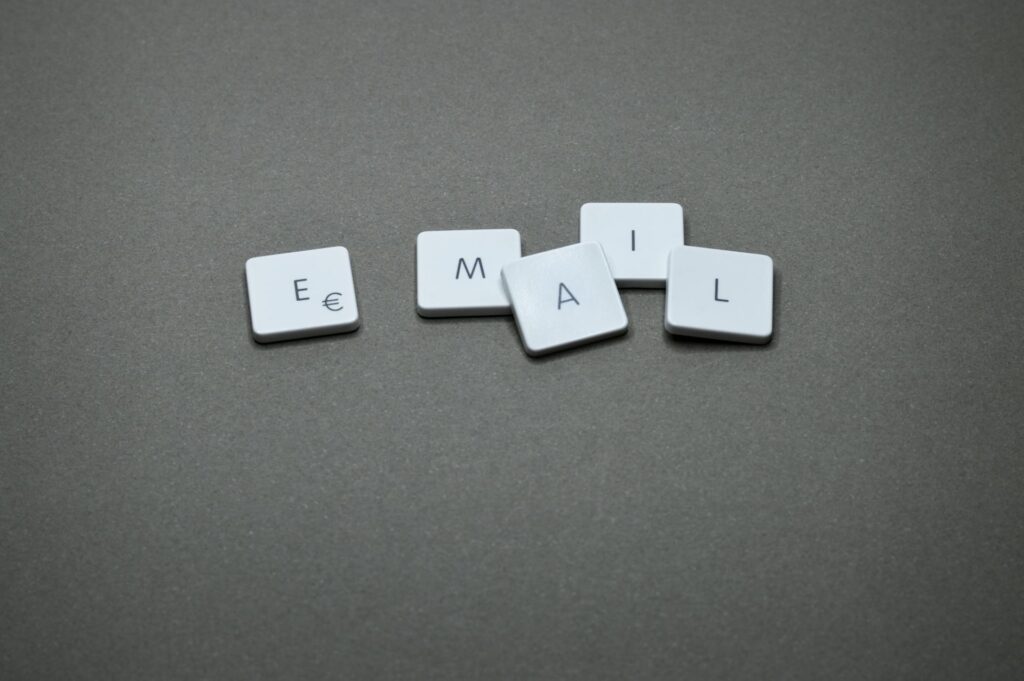What is Lead Magnet and How to Use It for Email Marketing Success?
To grow your business, you need to open doors to new opportunities, and one of the most powerful ways to do that is through lead marketing. But attracting the right audience isn’t always easy. People are constantly bombarded with ads, emails, and promotions, making it harder to capture their attention. So, how do you distinguish yourself […] The post What is Lead Magnet and How to Use It for Email Marketing Success? appeared first on Entrepreneurship Life.


To grow your business, you need to open doors to new opportunities, and one of the most powerful ways to do that is through lead marketing. But attracting the right audience isn’t always easy. People are constantly bombarded with ads, emails, and promotions, making it harder to capture their attention. So, how do you distinguish yourself from others? How do you get would-be consumers to engage with your brand voluntarily? The answer lies in offering something they can’t resist, something valuable enough to make them take action. This article will show you how you can use lead magnets for email marketing success and fuel your business growth.
But First, What is a Lead Magnet?
A lead magnet refers to a valuable resource or incentive offered to potential customers in exchange for their contact information, such as an email address. It is designed to attract and capture leads by providing something useful, such as an eBook, webinar, discount, checklist, or free trial. This entices potential customers to interact with a company and advance down the sales funnel.
Why Lead Magnets Are Essential for Email Marketing
There is no doubt that email marketing is an effective strategy for helping prospective customers. However, the hardest part is converting a person into a subscriber. Hence, a lead magnet can:
- Increase the number of email sign-ups by offering immediate perks.
- Reach out to a specific audience already interested in your niche.
- Build authority and trust by offering value before anything is asked in return.
- Increase the rates of conversion by engaging the leads and helping them through the sales funnel.
A well-prepared lead magnet assures that you get subscribers who are interested in what you do. However, it is important you first understand the pros and cons of email marketing.
Pros and Cons of Email Marketing
Here’s a breakdown of the common advantages and disadvantages of email marketing for your business.
Advantages
- Cost-effectiveness: Email marketing is cheap vis -à-vis traditional approaches like print advertisements. An email service provider is all you need, which makes it perfect for companies on a tight budget.
- Building Customer Relationships: Email marketing is creating long-lasting connections. Customers remain loyal if they receive regular updates, newsletters, and customized deals.
- Targeted Messaging: Segmentation helps you to send emails depending on engagement level, acquisition activity, or age.
- Scalability: Your email campaigns can grow along with your business. Based on the number of subscribers, several email service providers provide tiered pricing, so you can implement your email campaigns as your list grows.
- High Return on Investment: Companies can anticipate an average return of $36 for every dollar spent on email marketing. Therefore, it is among the most cost-effective techniques for business expansion.
- Personalization: From calling recipients by name to presenting tailored products, personalizing emails increases engagement and conversion rates.
- Data Analytics: Analytics helps to monitor email performance. Metrics like open rates and click-through rates allow you to optimize future campaigns.
Dis-advantages
- Constant Contact Emails Going to Spam: If your emails are too aggressive or have suspicious subject lines, they could wind up in spam emails, therefore lessening their power and damaging your integrity.
- Compliance and Legal Concerns: Laws like GDPR and CAN-SPAM Act regulate email marketing. Not adhering to these policies can result in penalties, hence it’s vital to have easy unsubscribe choices and opt-in lists.
- Unsubscribes and Poor Feedback: High unsubscribe numbers or negative feedback might damage your email list. Ensure subscribers may easily opt out to maintain a good relationship.
- Creating Engaging Content: Inboxes are flooded with emails every day, so standing out requires more than just a catchy subject line. The content itself needs to be engaging, relevant, and valuable. This can be a challenge, especially if you’re constantly trying to balance promotional material with useful content.
How to Use Lead Magnets for Email Marketing Success
1. Understand Your Audience
Knowing your audience forms the bedrock of any effective email marketing plan. Who are they? What are their needs, pain points, and interests? Use analytics and customer data to divide your audience according to demographics, behavior, and preferences. This segmentation means that you’ll be able to create targeted emails which improves engagement and conversion rates for every audience group.
2. Decide What Kind of Lead Magnet Works Best
Think about your audience and what they would find most useful. Is it a quick checklist they can act on right away? Maybe a free e-book packed with insights? Or a live webinar where they can learn from you directly? Whatever you choose, it should align with the type of business you run and highlight what you’re best at. The right format can make all the difference in capturing interest and building trust.
3. Create High-Quality Content
The content you offer should provide real value to your audience. This means your lead magnet should address a specific need or problem your target customers face. Make sure the information is well-researched, clear, and easy to understand. For example, if you have a cooking blog, an e-book filled with quick and easy recipes can be an attractive lead magnet that showcases your expertise. High-quality content is informative, well-written, and gives practical value.
4. Make It Easy to Access and Understand
It is important that your proposed lead magnet is easy to obtain and is of effective use. Avoid making it too complicated or time-consuming. For example, do not ask for considerable amounts of information at the start when people register. If the lead magnet is something lengthy like an e-book, make it available in parts so that it is easy to read. The less effort put into using and accessing it, the more users are likely to engage with it.
5. Excellent Call-to-Action
Your call to action (CTA) is what drives people to act. It should present precisely what the user would get by joining. Whether it’s “Download Now” or “Get Access Today,” the CTA should stand out and be easy to understand. But, also do not overdo it and give your readers too many options. Concentrate on one or two actions that you consider most important.
6. Test and Optimize
Try your lead magnet with a limited number of people first before you roll it out. Ask for their opinion on the general user interface, layout, and content. This will help you identify any areas that need tweaking. Make any needed changes based on this input so your lead magnet is maximally effective when it is published.
7. Promote Your Lead Magnet
Once your lead magnet is ready, it’s time to promote it. Promote it on your website, social media, email campaigns, or through paid advertising. Maximize engagement and draw as many leads as possible by advertising it on the channels most popular among your target audience.
8. Measure Success and Improve
After launching your lead magnet, keep an eye on its performance. Look at metrics like conversion rates and how many leads are generated. Take note of any feedback from users, and use that data to make improvements over time. Maybe your CTA needs tweaking, or the design could be better. With regular tracking and adjustments, your lead magnet will only become more effective at capturing and converting leads.
Conclusion
Lead generation for email marketing is about building lasting relationships with your audience. However, To achieve email marketing success, it is important to nurture your leads with relevant content, avoid common pitfalls like sending unending emails, and respect your subscribers’ preferences. Implementing the above strategies will increase the chances of creating more sales opportunities and generating better-quality email leads.
The post What is Lead Magnet and How to Use It for Email Marketing Success? appeared first on Entrepreneurship Life.
What's Your Reaction?



















































